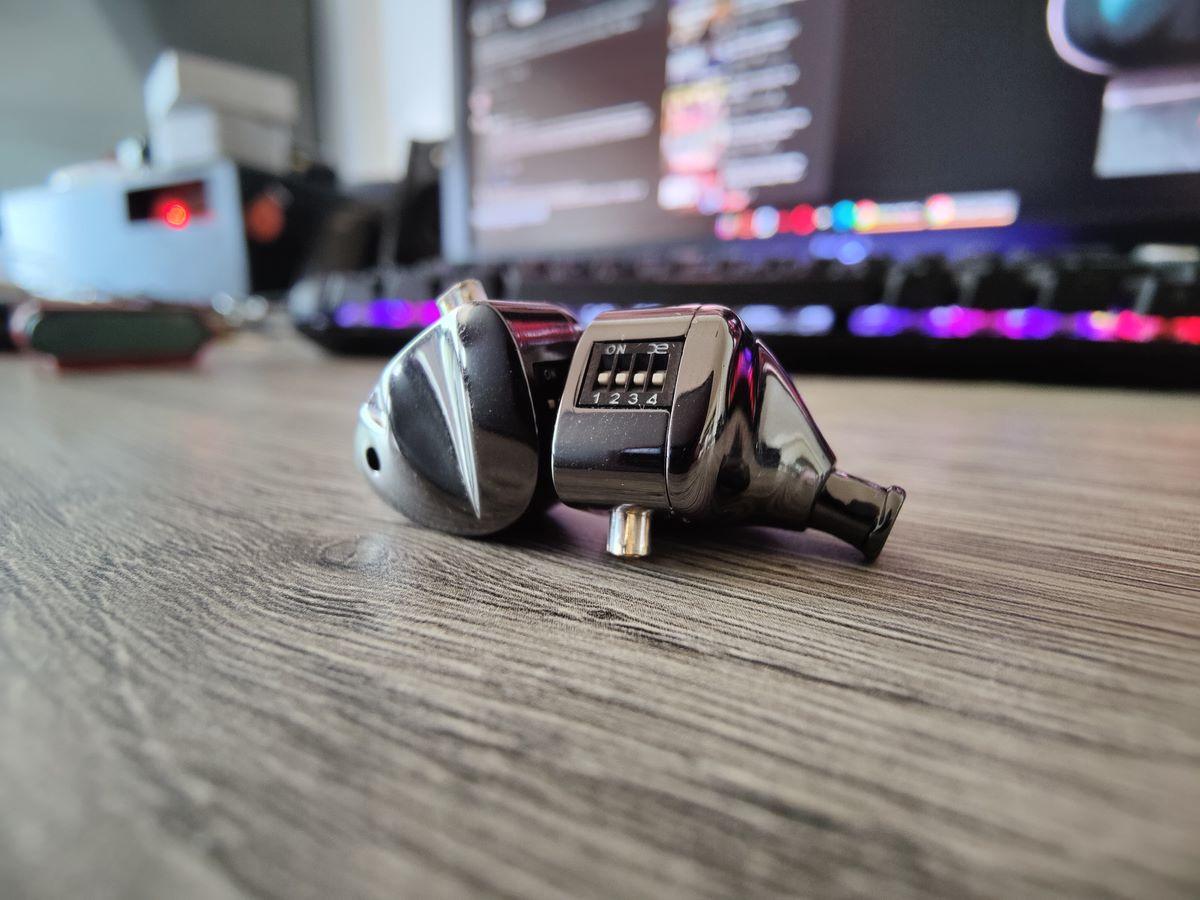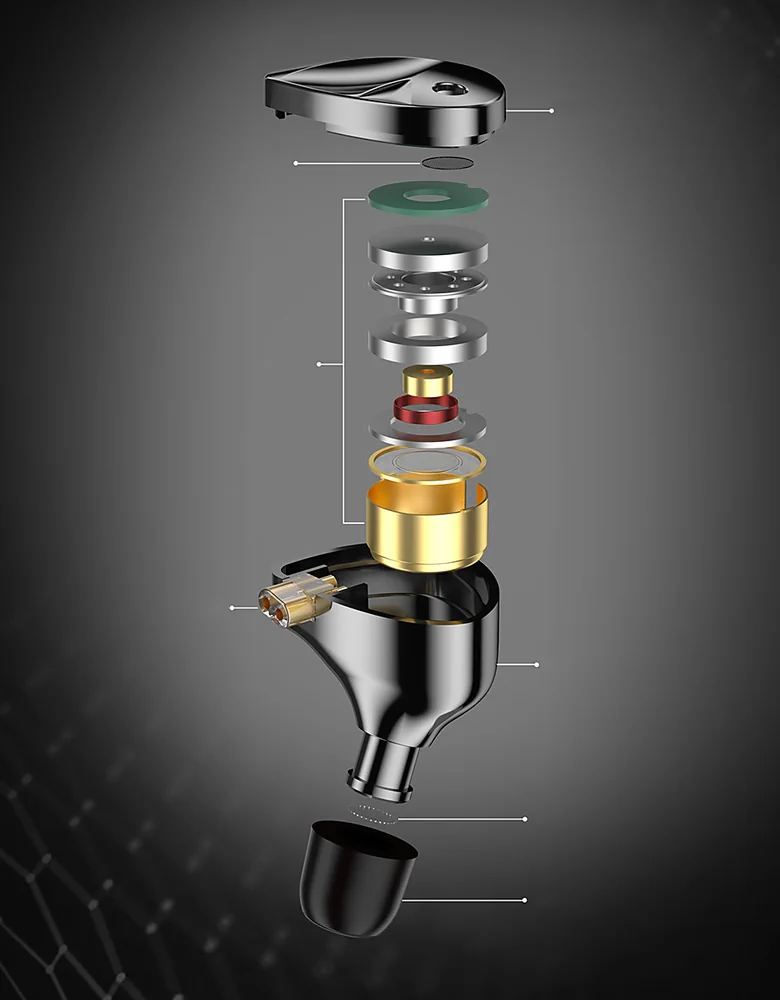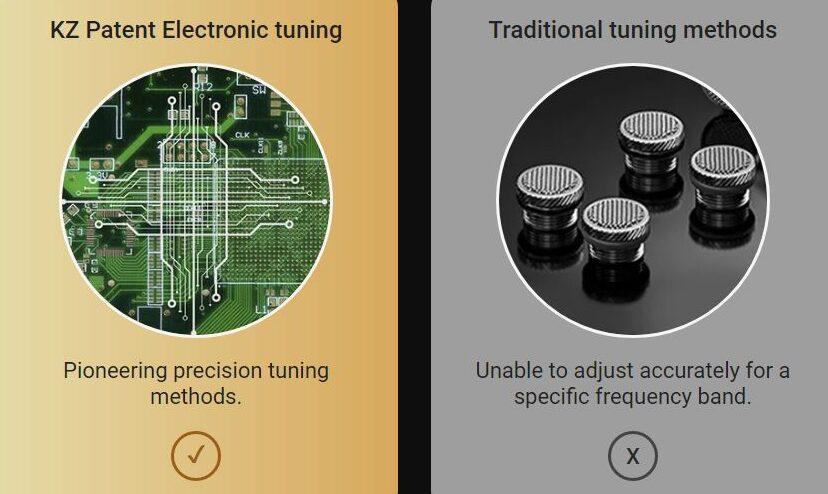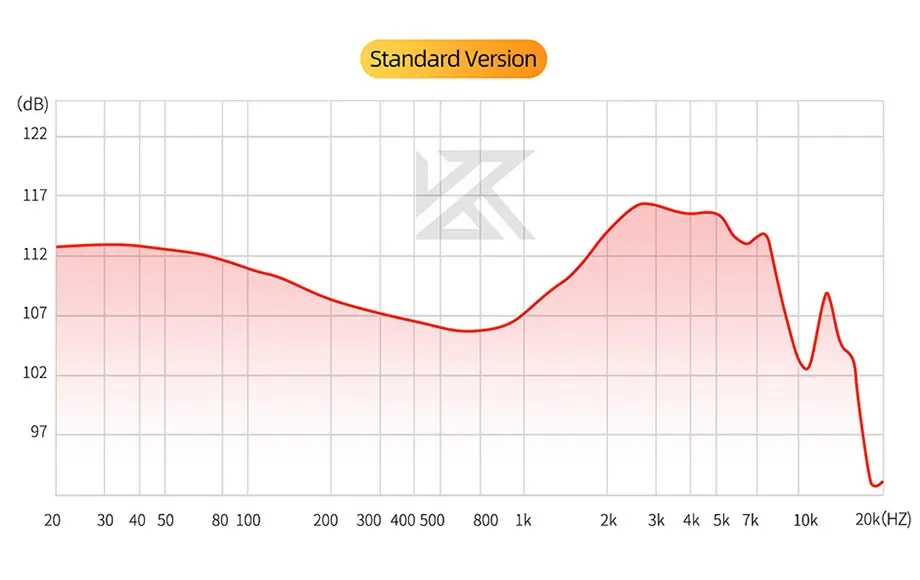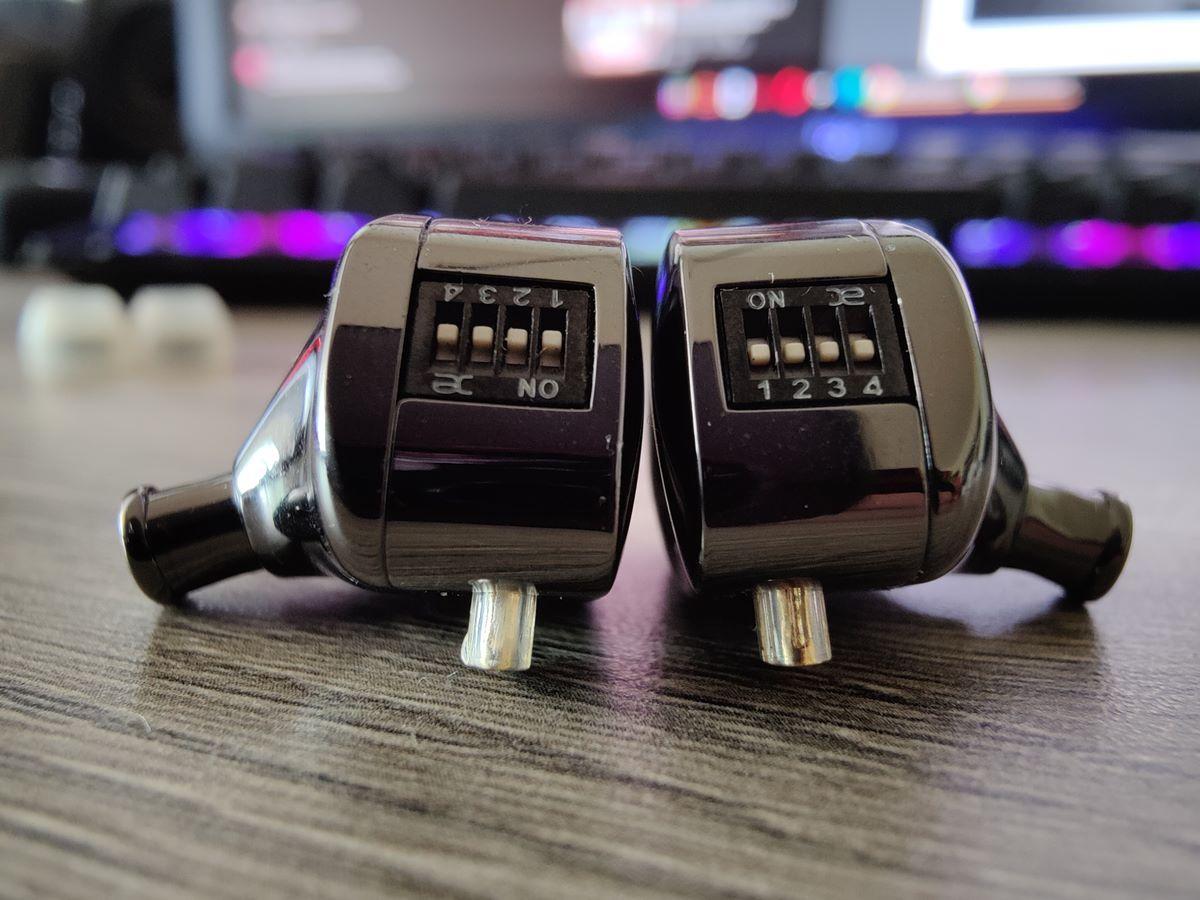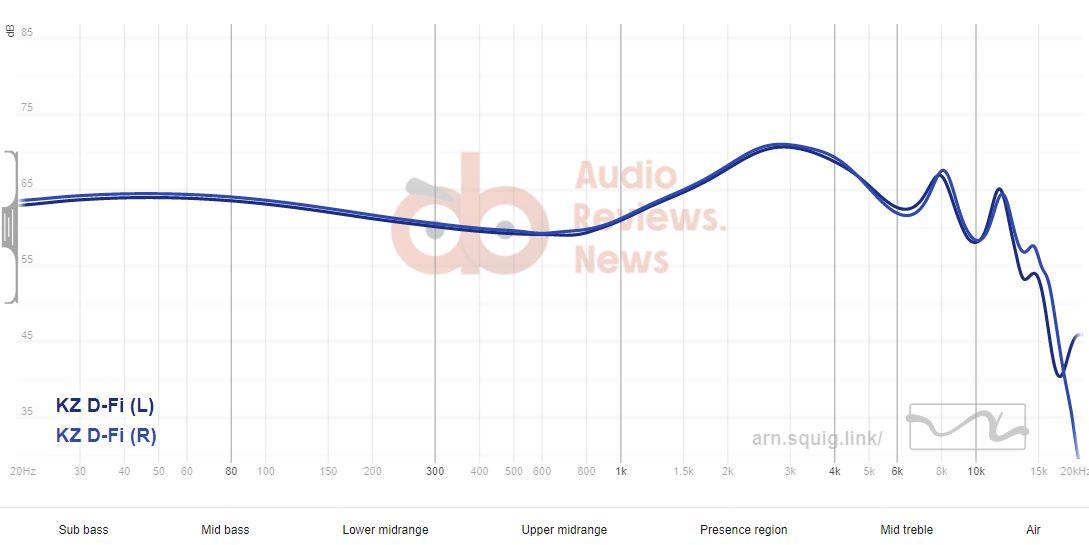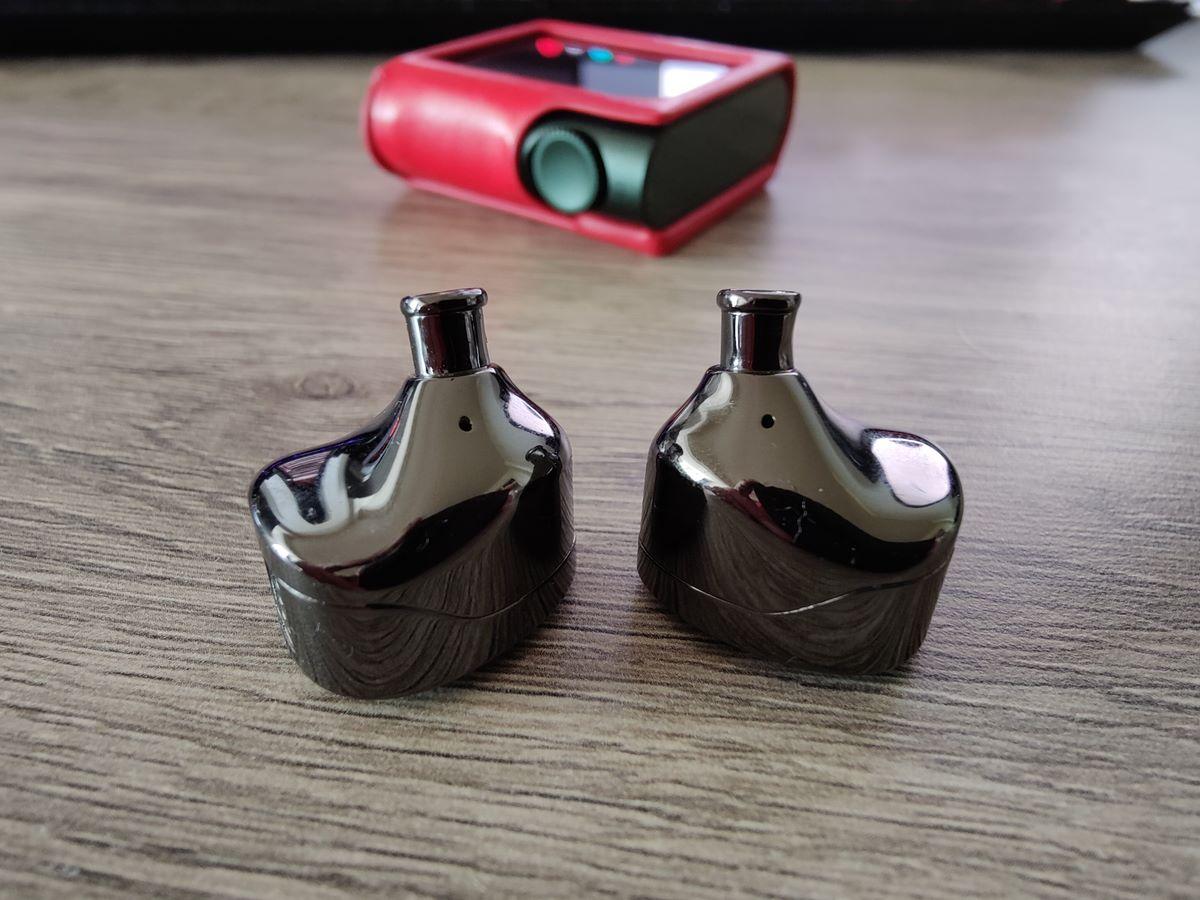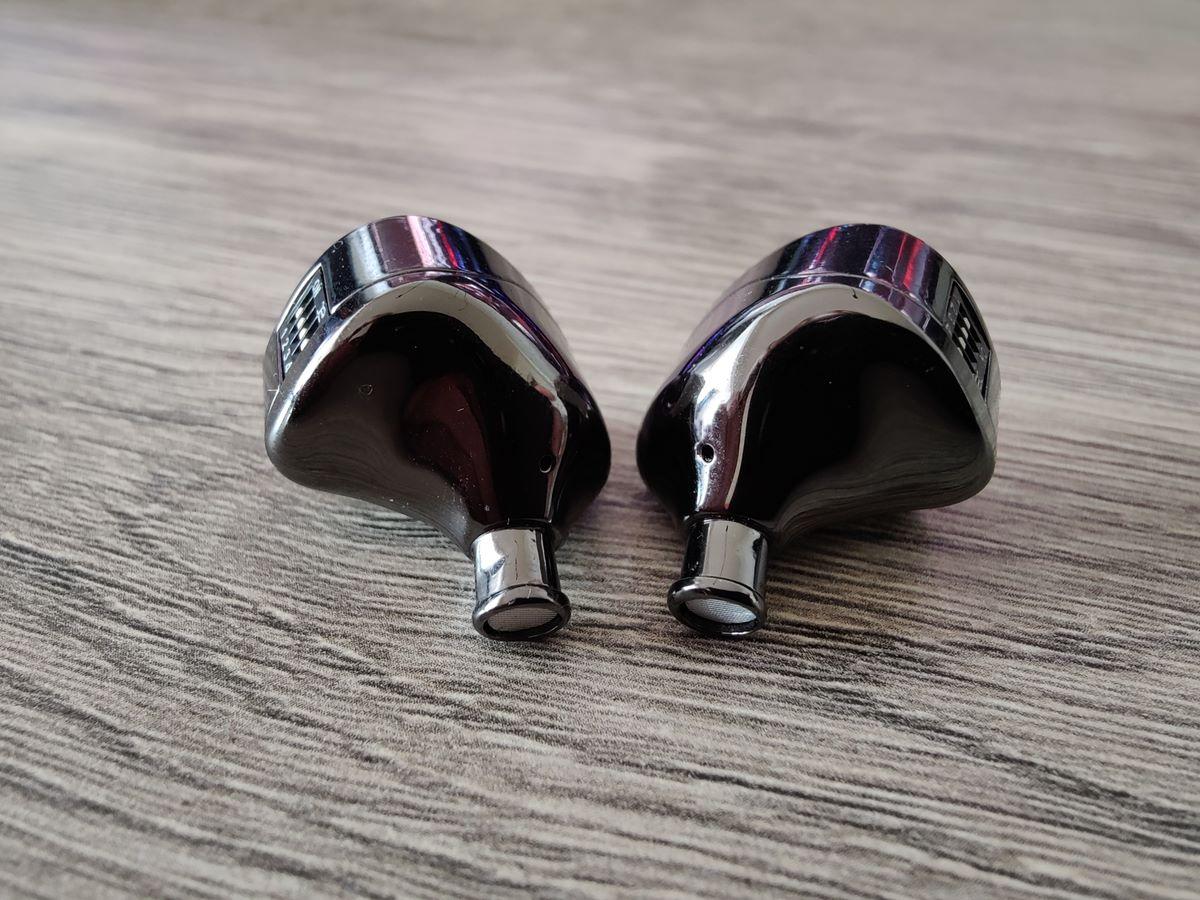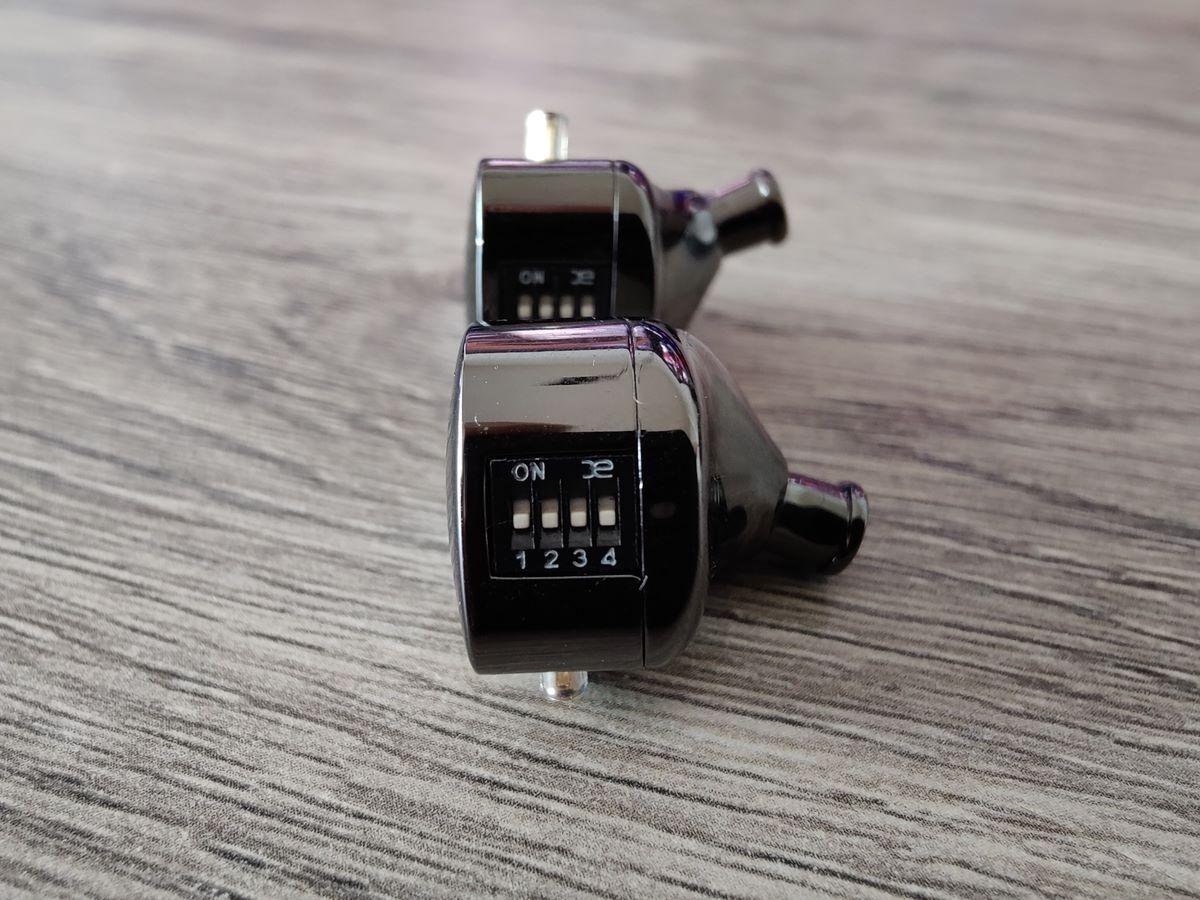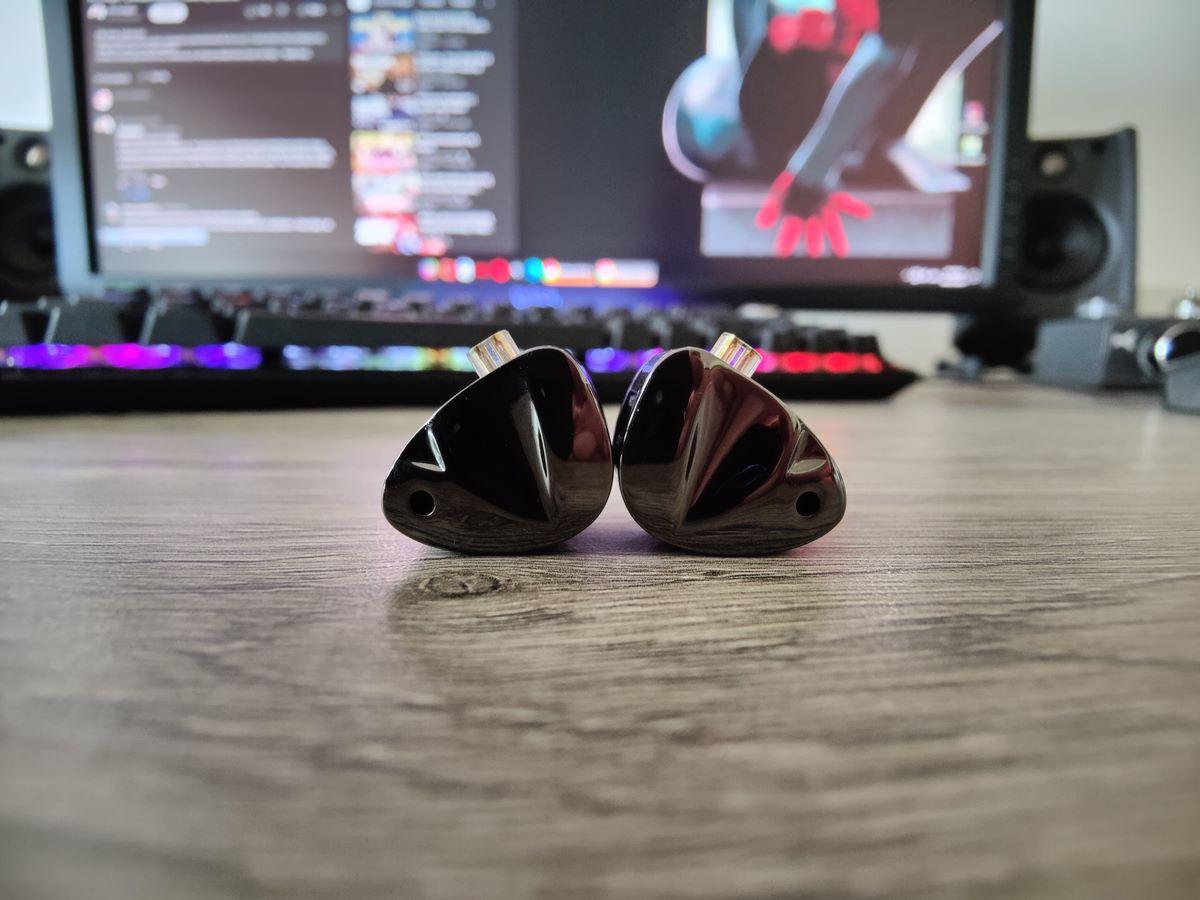KZ D-Fi Review – Small Step for KZ, Big Step for Audiophiles
KZ D-Fi comes with a custom dual-magnet & dual-cavity dynamic driver. Dual magnetic means a dual magnetic circuit whose magnetic field is enhanced by superimposing the magnetic force of 2 magnets to achieve energy efficiency and stronger transient performance.
KZ D-Fi is designed with a standard version and a tunable version. The standard version has an accurate and balanced frequency response tuning. The tunable version can achieve 16 different sound styles by adjusting the toggle switch to meet different needs.
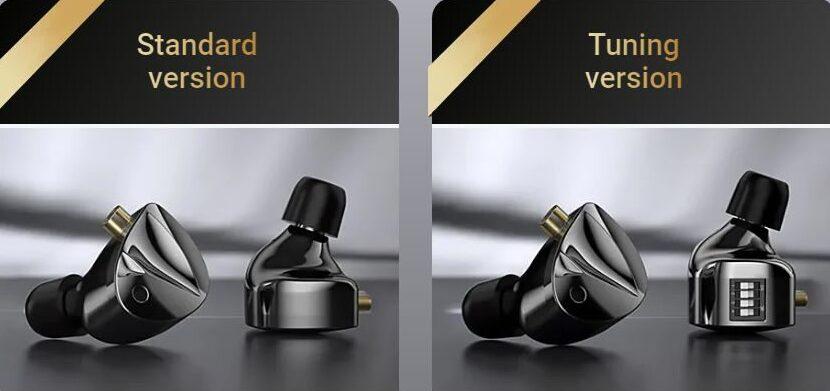
The traditional tuning method is achieved by replacing dampers with different mesh numbers and sizes, but this method cannot accurately control a specific frequency band. KZ adopts innovative circuit board adjustment methods to control each frequency band according to the target curve accurately. A Zobel network circuit which is only available in the tunable model of the D-Fi.
KZ D-Fi adopts a patented tuning technology and has 4-step electronic switches. The first, second, and third switches adjust low frequencies, each additional switch increases the lower frequency. The fourth switch combined with the rest 3 adjusts the full frequency band giving up to 4dB elevation.
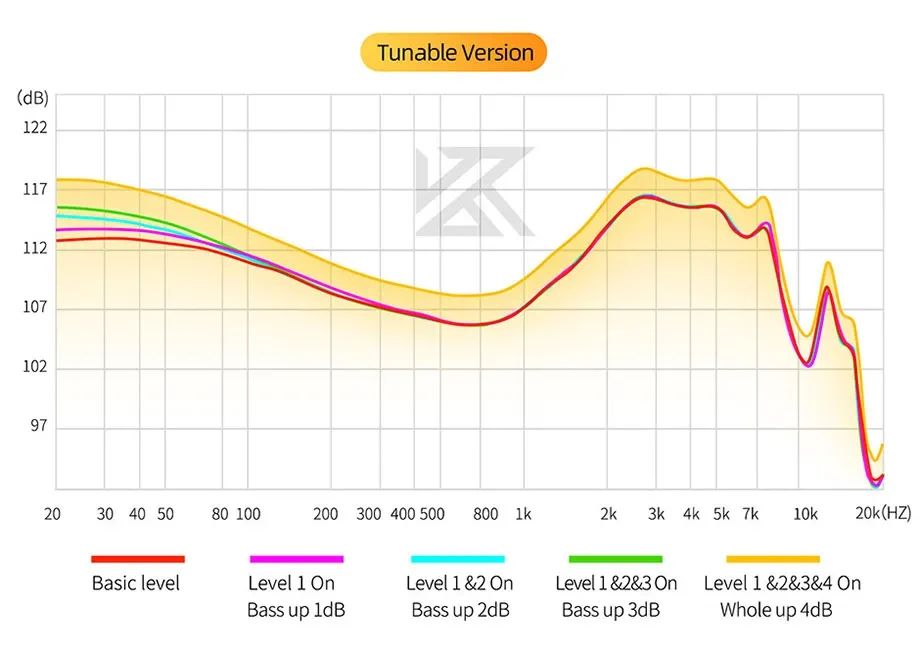
The cheaper non-tunable version of the D-Fi corresponds to the all switches down config, the least bassy setting of the above graphs.
Specs
- Impedance: Standard Version 23.5Ω, Tuning Version 29Ω~48Ω.
- Sensitivity: 110±3dB
- Frequency: 7Hz-45KHz
- Plug type: 3.5mm
- Pin Type: 0.75mm
- Cable Type: Silver-plated cable
- Cable length: 120±5CM
- Price: $26 for Standard, $32 for the Tuning version (+ $1 for mic).
What’s in the box
The narrow-bore tips boost bass at the expense of a compressed soundstage, whereas the wide-bore ones increase the higher-end and expand the soundstage. The foam tips give the best passive isolation, though taming the treble.
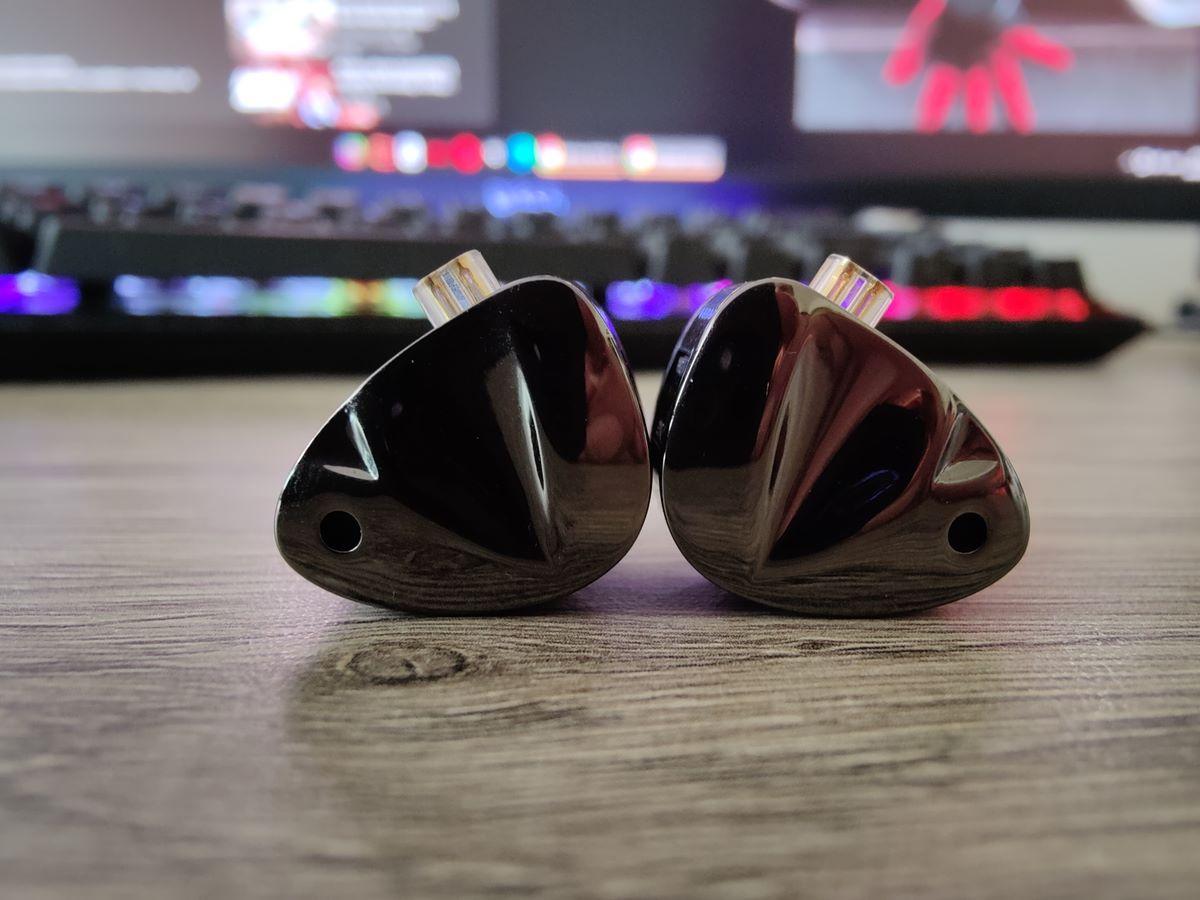
Sound
I prefer balanced and neutral sound signatures on IEMs. Low in quantity but high in quality on the bass, clean and forward mids, and a good level extension on the treble leaning to brighter sound. I don’t like bassy IEMS, even Harman-tuned ones.
I tested the D-Fi with the lowest bass, in the all-switches-down configuration as it suits better to my taste. Although my unit is the Tuning version, the sound analysis highlights more the Standard version. Because I think it has the cleanest sound in this mode.
The KZ D-Fi scales with amplification. Dynamics, soundstage, micro-details, and bass tightens with a good amount of power.
The D-Fi has a warm neutral tonality. This is rather unique compared to other budget sets that mostly feature a V-shaped or Harman tuning. Timbral accuracy is very natural for vocals and acoustic instruments.
Bass
The D-Fi is a sub-bass-focused set. The sub-bass extends moderately well (when properly amplified), and overall, the bass is just a slight tinge north of neutral.
The bass is speedy, with excellent texturing and no mid-bass bleed. The D-Fi’s bass is very clean and of high quality, even though it is lacking in terms of quantity. Think of the D-Fi as a neutral set with a slight bass boost.
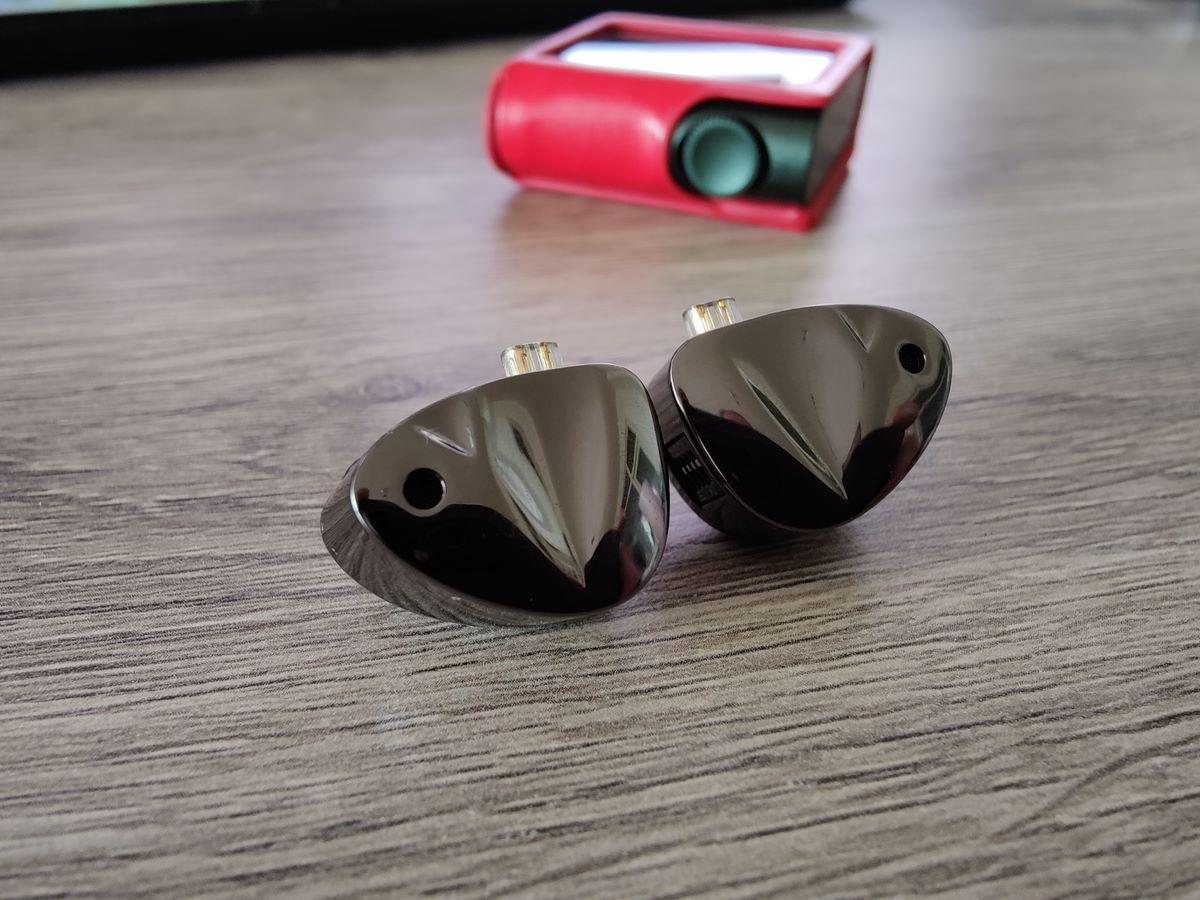
Mids
D-Fi’s mids are fairly neutral also, even leaning a little towards thin due to the lessened upper bass. While the clarity is good the midrange comes across as cool and somewhat analytical. Female voices are upfront but male vocals lack power and richness without being overly shouty, which is acceptable for this price range.
Treble
The tonal balance is about right and the level of detail retrieval is good. The D-Fi’s lower treble continues on from the boosted upper mids and can get glaring with louder volumes. The upper treble rolls off early, and there isn’t much brilliance or air in that region. Sibilance is minimal or non-existent depending mainly on your source, but there is some loss of micro-details.
Technical Performance
Micro-detailing, instrument separation, imaging, and clarity of the D-Fi are average at most when it comes to technical performance. The soundstage on the other hand is quite good. The stage position is neutral so vocals and instruments are neither too intimate nor distant. The attenuated mid-bass allows room to breathe so the stage isn’t congested.
Sum-Up
The KZ D-Fi is an ultra-budget pair that do more things good than bad. It has a good price-to-performance ratio. Its warm neutral tuning is quite unique in the budget segment. The D-Fi replaced the big bass, that can be found on many previous KZ IEMs, with fast and clean bass, which I like most. And gave you up to 5dB bass boost with the tuning switches if you find it lacking and want more. But I think more bass would kinda throw off the balance that this IEM has.

